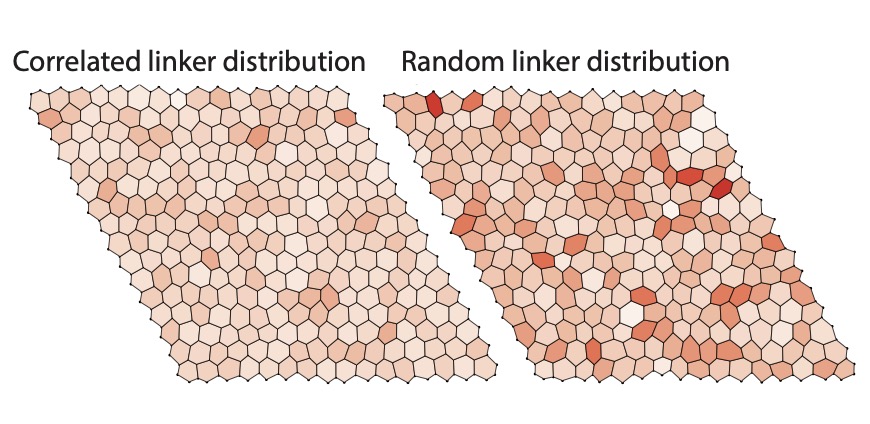The effect of disorder in multi-component covalent organic frameworks

Covalent organic frameworks (COFs) are a class of porous, crystalline materials composed of organic molecules, referred to as monomers, that are linked together through strong, covalent bonds. 2D COFs are synthesised by combining two planar organic monomers, and by virtue of the near endless number of organic monomers, COFs have become a powerful platform for structural design.
To introduce complexity and increase functionality into COFs, the number of monomers used in the synthesis can be increased. For most multi-monomer COFs, the monomers form an ordered structure. However, recently, COFs have been synthesised where the monomers are disordered within the structure. But disorder can be far random as there may be chemical “rules” that determine the local arrangement of monomers which do not lead to long range order. Structures with this type of disorder are known as containing correlated disorder.
In this paper we studied COFs formed from monomers of different lengths, and investigated the effect of both random disorder and correlated disorder on the COF’s pore size and shape. We find that the different linker lengths have a negligible effect on the pore size and shape when the ratio between the linker lengths is small, and a more significant effect for larger differences. These findings may have implications in using multi-component COFs for their porous applications as the distribution of the linkers affects the extent to which the pore size and shape can be selectively tuned for. Outside of porosity, the distribution of linkers in COFs can impact other properties such as electronic and optical properties. The process outlined in this paper can help create atomistic models for further property prediction of disordered COFs, elucidating a disorder/property relationship, which is often too computationally expensive to explore with traditional techniques.
Authors: Emma H. Wolpert, Andrew Tarzia and Kim E. Jelfs
https://pubs.rsc.org/en/journals/journalissues/cc#!issueid=cc059045&type=current&issnprint=1359-7345
